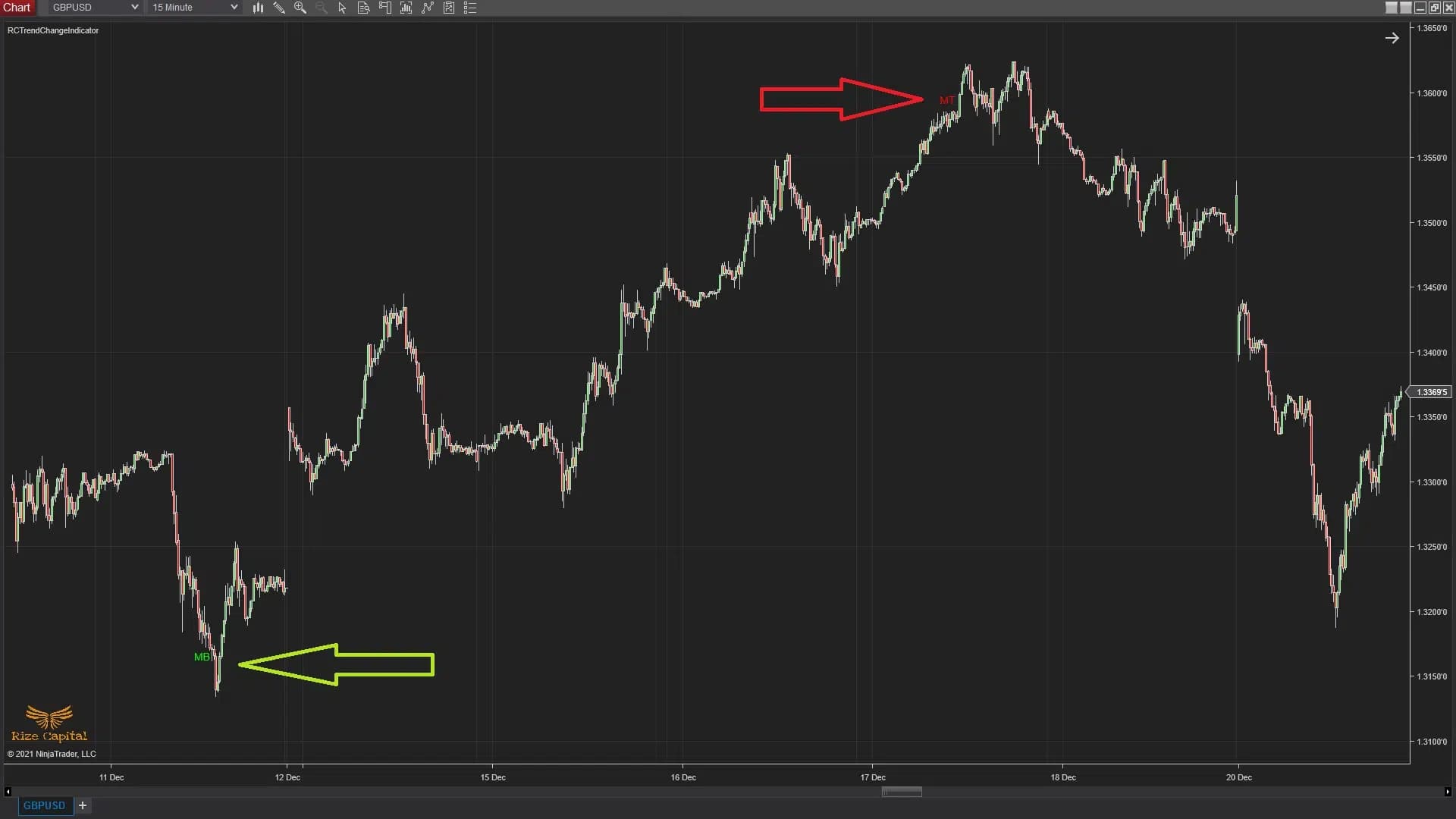Day Trading vs. Swing Trading: Which One Is Right for You?
Day Trading vs. Swing Trading – Learn the key differences and find out which style fits you best.
Trading in the stock market can feel like an adventure, but let’s be honest, sometimes it can also be confusing, especially if you are a beginner. If you are not a beginner, then you might have heard about two popular ways to trade, which are day trading and swing trading. You can think of them as two different styles of trading. One is fast. The other is slower, and it gives you more time to plan.
In this guide, we’ll break down what day trading and swing trading are, and help you decide which might be the best fit for your goals and lifestyle, whether you’re just starting out or looking to refine your approach.
What Is Day Trading?
If you want to trade fast, then Day trading is just what you want, because this is the fastest way of trading where you can buy and sell things like stocks, currencies, or commodities all within the same day. But as a day trader, you have to keep in mind that you will have to catch small price changes and make small profits during the day. Day traders always buy and sell before the market closes. This means, as a day trader, you don’t have to keep anything overnight. That’s a smart move you can make because prices can change a lot after the market closes. So, closing your trades before the day ends helps you avoid surprises and keeps things safe.
For example, if you buy a stock at $10 in the morning and sell it at $10.20 a few hours later, you might make a small profit, but it's safe. And that’s how day trading works: early moves to earn small gains again and again. These small profits can add up over time if you do trades carefully.
You are a fast decision maker, but lag in staying focused? Well, that won’t work in trading at all. Because it’s not something you can do part-time or while doing other things. To trade better way, you have to sit in front of computers for hours, watching price charts and looking for the perfect time to buy or sell. That’s why day trading often feels like a full-time job.
As a day trader, you can use tools that will help you trade better. These tools include fast computers, real-time charting software, and trading platforms. You can use technical analysis tools, which will help you study charts, patterns, and indicators like moving averages or candlestick shapes. Along with that, you can do one more thing is keep eyes on the latest news and events to see if anything might cause sudden price changes.
It will be a wise decision for you to choose markets that move quickly and have lots of activity. Like, you can go for stocks, forex, crypto, and commodities. If you choose forex, it can be beneficial for you. Because it’s especially popular, for the largest and most active financial market in the world, open 24 hours a day, with a daily trading volume of over $6.6 trillion.
Day trading sometimes uses something called leverage. This means you can make big trades even if you only have a small amount of money. Sounds great, right? It can help you make more profit if the trade goes your way. But be careful, if the market moves the wrong way, you can lose a lot too. That’s why it’s important to manage your risk and never trade more than you can afford to lose.
What Is Swing Trading?
If you are not in a hurry and want to make money when the price goes up, then swing trading is for you. It is slower than day trading, which happens in one day. But somewhere it’s better than long-term investing, where you have to hold things for months or years. Here you can buy and sell things like stocks, gold, or currencies. What you have to do is hold them for a few days or even a few weeks.
It’s also a good option for people who don’t have time to watch the market all day. You can even do it in your free time. You can use tools like price charts and indicators such as RSI and Fibonacci. If you want, you can also check support and resistance levels to know when to buy or sell them.
In swing trading, you might buy at a low point and sell at a higher point. In a downtrend, you can sell high and buy back when the price drops. For instance, you might buy a stock on Monday because you believe it will rise by Friday. If the price goes up as expected, you sell it for a profit. You can mix technical analysis (like charts) and fundamental analysis (like company news or earnings) to make your decisions easier.
You might find that swing trading profitable, but it does come with risk. That’s why you can use stop-losses to protect yourself, and you can set profit targets in advance.
How Do Day Trading and Swing Trading Compare?
To help you understand the differences, here’s a comparison of day trading and swing trading:
Pros of Day Trading
Here are the pros of day trading you should know:
- Fast Profits: Day traders try to earn money fast by buying and selling within minutes or hours. So, even a small price change can bring a profit. If done right, small changes can add up quickly over time.
- No Overnight Risk: Since day traders close all trades before the market ends, they don’t have to worry about news or surprises that happen after hours. This means less stress about sudden price changes while you sleep.
- Exciting and Fast-Paced: Day trading is full of action. Here, prices move fast, and you have to make decisions fast. So, if you like challenges, fast thinking, and staying active, this can be best for you.
Cons of Day Trading
Here are the cons of day trading you should know:
- Very Stressful: Watching the screen all day and trying to catch small moves can be exhausting. You need full focus and must act fast. For some people, the pressure can be too much.
- Time-Consuming: Day trading is not something you can do for just a few minutes. It’s like a full-time job. You need to be available during market hours and can’t step away easily.
- Higher Costs: Each time you buy or sell, you pay a small fee. Since day traders make many trades, these costs can pile up and eat into profits.
- Risky for Beginners: The market can be tricky. Many new traders lose money quickly because they jump in without enough knowledge or practice. Even experts warn that day trading can lead to big losses if you're not careful.
Pros of Swing Trading
Here are the pros of swing trading you should know:
- Less Time-Intensive: Swing trading doesn’t need your full attention all day. You can check the market once or twice a day. This makes it great for people with jobs, school, or other things to do.
- Lower Stress: Because you have more time to plan and think, swing trading feels more relaxed. You don’t need to make split-second decisions. You can take your time before entering or exiting a trade.
- Bigger Profit Opportunities: Swing traders try to catch larger price moves over several days or weeks. This means they may make more money from a single trade than a day trader who jumps in and out quickly.
- Flexible Lifestyle: You don’t need to sit in front of a screen all day. Swing trading fits around your life. It’s great for people who want to trade without changing their whole routine.
Cons of Swing Trading
Here are the cons of swing trading you should know:
- Overnight Risk: Since you hold trades for days, anything can happen overnight. News or events can suddenly change prices, which can lead to losses while you’re not watching.
- Patience Is Needed: Swing trades don’t work out instantly. Sometimes, you’ll wait days or weeks for your plan to play out. If you like fast results, this might feel slow.
- Missed Short-Term Opportunities: While you wait for a big move, you might miss small, quick chances that day traders grab. If the market moves fast in a different direction, your trade might not work out as planned.
Conclusion
So, it’s time to decide which one you want to choose for yourself. Both trading are interesting ways to take part in the stock market. Although they are not the same, each one fits different kinds of people. Day trading is fast and intense. It’s best for those who can watch the market all day and make decisions faster. Whereas swing trading is slower and more relaxed. It’s great for people who don’t have much time and want to hold trades for a few days or weeks.
One style is not better than the other. It all depends on your lifestyle, how much risk management capacity you have, and what goals you have. The SEC (a U.S. market regulator) warns that trading, especially day trading, can be risky. Many beginners lose money in the beginning. That’s why you can start with a demo account, learn the basics, and only trade with money you can afford to lose. With patience and practice, you’ll discover which trading style works best for you.

Suraiya Akthar Sumi
SEO Content Writer
Suraiya Akthar Sumi is a creative content writer, loves bringing ideas to life through engaging blogs and SEO articles.
Related Posts

Best Trend Indicators for NinjaTrader 8: Your Complete Guide
The Trend Change Indicator excels at predicting significant trend changes before they actually occur.

Does NinjaTrader Have Automated Trading? Step-by-Step Guide to Easy Automation
Learn how to automate trading with NinjaTrader. Our step-by-step guide covers everything you need to get started with automated trading easily.


